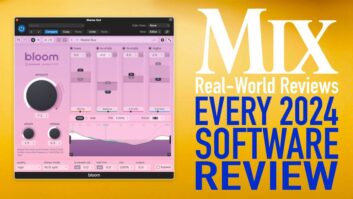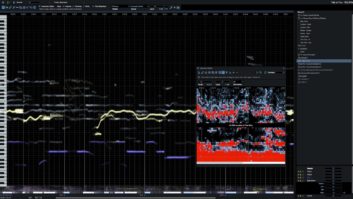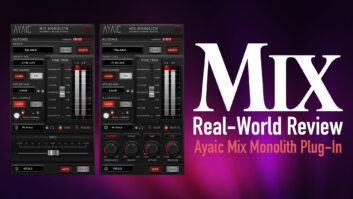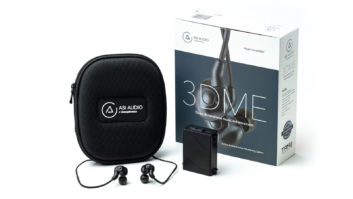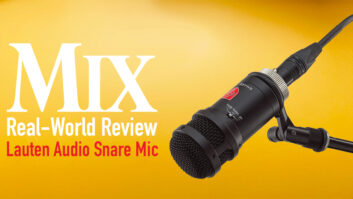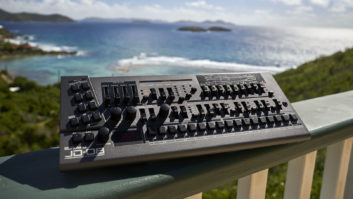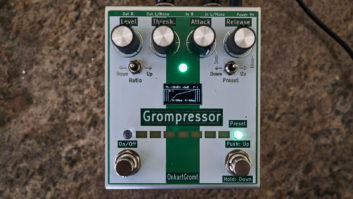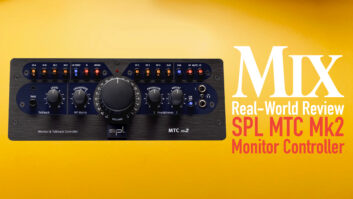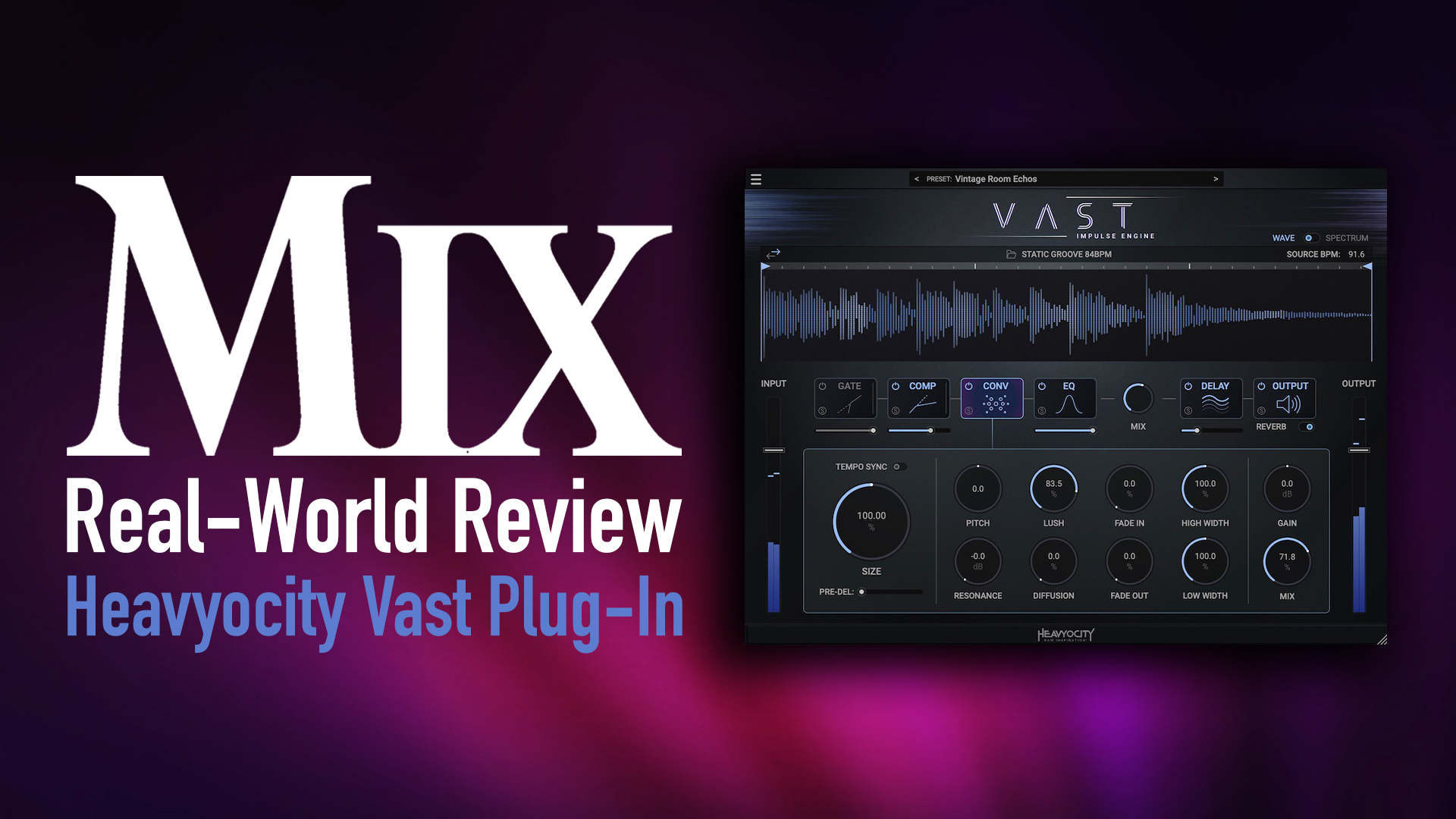
| MIX VERDICT: HEAVYOCITY VAST |
| THE TAKEAWAY: “Whether you want a high-quality convolution reverb or a very flexible tool to utterly transform your sample libraries, Vast is a strong contender for both music production and sound design.” |
| COMPANY: Heavyocity • www.Heavyocity.com PRICE: $99 retail; $79 crossgrade PROS: • High-quality convolution reverbs and unusual IRs enhance or radically transform tracks. • Custom .wav and .aiff files can be imported for use as IRs. • IRs can be processed in many ways. CONS: • IR tweaks can’t be saved as presets separate from global presets. • Presets can’t be marked as favorites. • Creating unusual sounds for practical use can be hit-and-miss. |
New York, NY (June 27, 2024)—When I hear “convolution,” I immediately think “reverb,” or “speaker cabinet.” Of course, convolution in pro audio—the process of applying a previously captured impulse response to another audio signal, such as on an instrument or vocal track—isn’t theoretically limited to using only ’verb and cab IRs.
Heavyocity’s new stereo plug-in Vast lets you use any audio file you wish as an IR, as long as it’s under 60 seconds in duration. (Birdsong-modified grand piano, anyone?) And while the plug-in also provides convolution reverbs, it does so with panache, dishing out reverse and tempo-synced ’verbs offered by few competing products. Other IRs in the plug-in’s library (202 at press time) apply rhythmic grooves to your tracks, fundamentally changing their performance in surprising ways.
The factory-supplied IRs are organized (in a separate browser) in eight categories—Rooms, Halls, Plates, Springs, Large, Immense, Rhythmic and Textures—the first six of which are conventional reverbs. Vast also includes 239 global presets, each of which loads an IR in combination with factory-supplied effects specifically tailored for it. Remember this before loading a new preset to use its groovy effects chain, as doing so will also switch to a new IR.
The seven user-adjustable effect modules include EQ, Gate, Compressor, Delay, Convolution, Dry/Wet Mix and Output. Clicking on a module opens its control set at the bottom of the UI. With the exception of the Output module, you can change the order in which a module is placed in the plugin’s series-connected audio path by simply clicking on it and dragging left or right. Each module can also be bypassed or soloed.
Most of the modules also have a slider below them that you can drag to change its associated effect’s wet/dry mix or intensity (for example, the gate’s ratio). The Output module is again the exception, substituting instead a useful switch for turning an additional reverb on and off. After you’ve tweaked the modules’ parameters to your liking, you can load different IRs in turn—auditioning larger or smaller reverb sizes, for example—without affecting the UI’s control settings.

ROLL YOUR OWN
Of all the effect modules, Convolution is the star attraction. This is your gateway to loading factory-supplied IRs or your own files. To load your own, simply drag and drop a .wav or .aiff file onto the waveform display, which sits above the effect modules in the UI. Alternatively, you can load a factory IR by double-clicking it in Vast’s dedicated IR browser. Mark your favorite IRs for fast retrieval, and expedite your browser surfing by filtering the library’s offerings by category of IR (e.g., Rooms or Rhythmic). Keep in mind that importing your own audio file for use as an IR does not make a copy of it; it’s a good idea to create a folder on your storage drive for all your custom IRs so that you can quickly find them and drag them into a Vast preset.
The waveform display can be switched between an amplitude-based framework, like how your audio tracks are displayed in your DAW, and a frequency-based spectrograph—except when you select the EQ module, where the display shows an interactive frequency-response graph of your filter adjustments. The display section’s ultimate power lies in complementary controls that let you quickly adjust the currently loaded IR’s start and end points, and reverse its impulse response. That last trick is how VAST creates reverse reverbs.
You are able to transform the currently loaded IR even further within the Convolution module, where 13 controls let you sync the length of the IR to your DAW’s tempo, set a pre-delay time before the convolution signal starts, adjust the IR’s pitch and resonance, add modulation and/or diffusion to the IR, apply fade-in and/or fade-out to the file, and adjust its stereo image independently in its low- and high-frequency ranges. Unfortunately, dedicated IR presets are not supported, so you can’t save your tweaks to an IR (in the waveform display and Convolution control set) separately from the global preset it’s being used in. The predelay slider also lacks a readout when making manual adjustments not synced to your DAW, an imprecise proposition.

EQ, GATE, COMPRESSOR, DELAY
The EQ module provides three bands outfitted with parametric bell-curve equalization and two other bands that offer various combinations of shelving, high-pass and low-pass filters. A helpful Amount slider scales the equalizer’s overall effect.
Vast’s Gate and Compressor modules offer more than just the usual threshold, ratio, attack and release controls, plus makeup-gain and wet/ dry-mix controls for the compressor. You can independently adjust the cutoff frequencies for high-pass and low-pass filters in each module’s sidechain. Alternatively, an internal LFO— with adjustable rate and width controls—can modulate the Gate’s detector signal.
Harrison 32Cpre+, MR3eq and Comp 500 Series Units — A Mix Real-World Review
High-pass and low-pass filters also populate the Delay module. You can set the module’s delay time manually or sync it to your DAW’s tempo, create ping-pong echoes by applying a delay-time offset between left and right channels, degrade the delay’s audio quality (selecting either an “analog” or “digital” flavor), modulate the delay (by adjusting controls for modulation rate and intensity), apply feedback to increase the number of echoes produced, and shift the pitch of the delayed signal. Clicking a toggle places the pitch shifter after the delay’s feedback circuit to make each successive echo rise or fall in pitch, depending on the rotary Pitch control’s setting. Like the Convolution and Compressor modules, the Delay module has its own wet/dry Mix control.
Vast’s Output module includes three (independently bypassable) signal processors— reverb, EQ and a clipper—that are applied in series after all the other modules. Seven different reverbs are singly offered, with separate controls to adjust their brightness and wet/dry balance. The EQ, called “Tone” in this module, alternately serves up either low- and high-shelving filters (with adjustable gain) or high-pass and lowpass filters (with adjustable corner frequencies). Control any one of six different types of clippers using their shared Threshold control.
AN IMPULSIVE NATURE
With a little browsing, I could always find a conventional room, plate or chamber reverb that sounded great on vocals, trap drums and electric guitar tracks, but where Vast really shines is in its offering of absolutely humongous Immense-category reverbs, which are bound to find a home on spacey Enya-inspired ballads and in cinematic sci-fi FX tracks. Sound editors working in horror and sci-fi will also find very fertile (and warped) ground in IRs from the Rhythmic and Textures categories. The Rhythmic category of IRs also yielded interesting results on snare drum tracks, sometimes radically changing the groove. The only downside (or not!) is that the result often sounded a bit phase-y.
The Textures IRs evoke Forrest Gump’s proverbial box of chocolates—you never know what you’re gonna get. With Vast’s output set to 100% wet—and my dry track’s faders all the way down and its insert sends set to pre-fader—a monophonic electric guitar vamp became an eerily whistling banshee with one Textures IR applied and an electrified harmonium with another. An IR can also sound quite different depending on the audio source feeding it. You can get some truly unusual sounds, but it might take some hit-and-miss fiddling to make them usable.
In fact, some of Vast’s global presets are so unusual and engaging, I wish I could mark them as favorites (as you can with IRs) and write in a comments field what applications or productions I like using them for.
Whether you want a high-quality convolution reverb or a very flexible tool to utterly transform your sample libraries, Vast is a strong contender for both music production and sound design. Vast’s ability to heavily modify the groove of music tracks is also a distinctive feature, breaking alien ground not ventured onto by other convolution plug-ins that I’m aware of. I like that!
